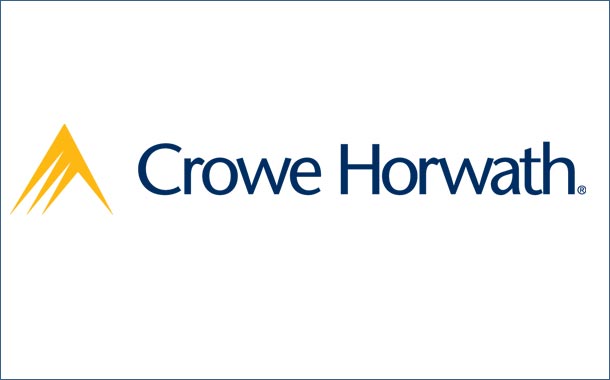By Stuart McCallum and Steve Schumacher, ASA, CPA – Crowe Horwath
In a period of declining sales and profitability, gaps between buyer and seller expectations of future earnings can undermine a dealership sale. The use of a contingent consideration such as an earn-out can provide a valuable bridge that allows the deal to go through without either party taking a greater risk than desired.
Differing expectations

Stuart McCallum
Uncertainty regarding future automotive sales is understandably resulting in price expectation gaps between buyers and sellers in the dealership market. Although sellers are confident that the increase in vehicle sales will resume potential buyers might well cling to gloomier predictions.
As a result, the parties can find it challenging to arrive at a purchase price that satisfies everyone. Sellers are not willing to adjust their exit price expectations; buyers are skeptical about the possibility of future growth and, as a result, are reducing their offer amounts. A dealer might want $7 million for his or her organization, assuming the dealership’s business will remain the same or improve. But a buyer may offer only $5 million, based on the belief that sales will deteriorate in the near future.
A transaction with an earn-out can pave the way for a seller to participate in the upside of the deal while still allowing a leery buyer to benefit from a lower transaction cost should his or her dire predictions come to fruition.

Steve Schumacher
An earn-out sets a benchmark for a dealership’s future performance, at which point the seller would be entitled to additional compensation beyond the initial sales price. In their simplest form, earn-outs say that the seller will receive additional purchase consideration at a later date if certain criteria are met.
The benefit to the seller is clear – it gets a piece of the action if the dealership achieves the criteria. The benefit to the buyer is twofold: 1) its gets to close the deal, and 2) it only pays the additional sales price if the seller’s rosier expectations come to fruition.
According to attorney Stephen Dietrich of law firm Holland & Knight, “Earn-outs are becoming part of the conversation to solve the ongoing disconnect between a seller’s and buyer’s belief in value. As parties try to put together a deal and proof of value becomes more difficult to determine, buyers are shifting some portion of the pricing risk to the seller. Sellers who are confident in their value are starting to accept putting a portion of the deal payout at risk with earn-outs of one or two years.”
In the example mentioned earlier, the purchase agreement could include the $5 million price the buyer seeks, with the possibility for a $2 million earn-out that could bring the total sales price up to the $7 million the seller desires.
Historically, the dealership industry has not incorporated earn-outs in sales transactions, perhaps because of perceptions about their complexity. As buyers are becoming larger and more sophisticated, however, earn-outs are increasingly being viewed as a valuable tool for salvaging deals that could involve tens of millions of dollars – especially in a year in which experts are forecasting sharp declines in sales in the near future.
Drafting an earn-out agreement? Beware gross profit and net income
The negotiation of an earn-out clause, particularly the criteria for triggering the earn-out payment, should not be taken lightly. Sellers should be very careful in basing earn-outs on gross profit or net income.
Net income figures can be affected by related-party expenses such as rent, compensation, or other discretionary spending. Manufacturer incentive programs could result in a dealership losing money on every unit sold in a month in an effort to qualify for a lump-sum unit volume incentive bonus that gets reported below the line in “other income,” resulting in the dealer reporting minimal gross profit.
The better approach for sellers is to base earn-outs on top-line revenues or unit volume – both of which are more a measure of industry growth – or a predetermined and agreed-upon formula for calculating the earnings base.
If the purchase agreement does refer to gross profits, it should define the term carefully. For example, the agreement could define “gross profit” as the gross profit on new and used vehicles, service, and parts, plus documentation fees, manufacturer incentives (including stair-step and volume incentive bonuses), and captive insurance income. Overlooking such nuances when selecting the earn-out benchmark could end up costing the seller significant dollars.
Don’t kill the deal
A relatively minor difference in future performance expectations doesn’t have to be the deal breaker for dealership sales transactions that it has been in the past. Potential buyers spend a lot of time and money identifying and evaluating targets, and it would be foolish to kill a deal that otherwise meets all the parties’ requirements. Particularly with larger, more sophisticated transactions, qualified professionals can help dealerships negotiate earn-outs that will get their deals across the finish line.
Stuart McCallum is with Crowe Horwath LLP and can be reached at +1 630 706 2093 or stuart.mccallum@crowehorwath.com.
Steve Schumacher is a partner with Crowe Horwath LLP and can be reached at +1 630 586 5260 or steve.schumacher@crowehorwath.com.
Crowe Horwath is a global public accounting, technology, and consulting firm.













One Comment
Kevin Kretz
Very informative article on Earn-Outs, but I had some thoughts on conflict of interests that may arise from these deals. I could imagine a business which acquires another firm but chooses to perform under the threshold where the payment for an ‘Earn-Out’ would be granted. I assume there must be some way to assure the sellers that the buyer of the firm are doing everything in their power to make the most money during the time of the ‘Earn-Out’. As a seller, I would want to not have a large amount of the deal contingent on the ‘Earn-Out’ because the future functions of the business would be out of my control.